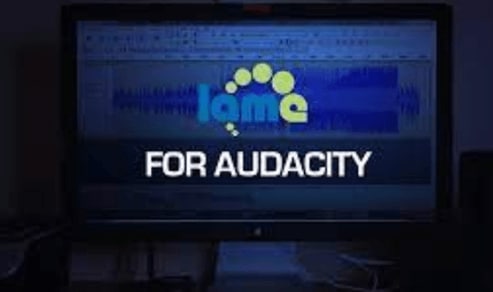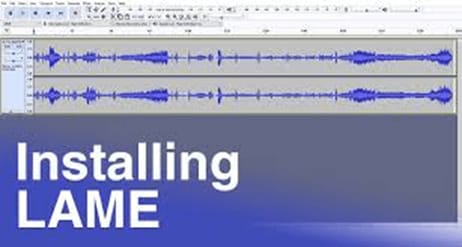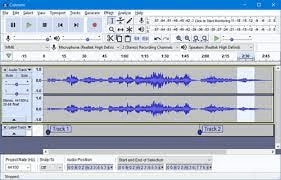Lame for Audacity, one of the greatest mp3 encoders available for free download, since it's a bummer. Music & sound processing may be used with it. The editing and recording features are also a lot of fun to play with. Let us now begin our investigation into how lame for audacity may be downloaded and installed. Check out the Audacity website for additional tutorials on how to use Audacity.
Two files are included with the lame for audacity download. An mp3 encoding program for CD playback, Lame.exe, is the other one. Lame-enc.dll is the second (ICL 11,1). The ".regedit" Windows database has a copy of this file.
MPEG 1, 2, & 2.5 are now included in Lame's most recent release. a free encoding engine with additional layers of VBR ABR & CBR encodings If your computer has at least a Pentium 4 CPU, encoding will be much quicker. Noise interference may be minimized using the advanced audio settings.
Download Lame for Audacity

Chrome OS does not support the most recent version of Audacity. It is possible to use Audacity on a Chromebook, even though it is not officially supported, by using the Chrome version for Linux Ubuntu. We wanted to be as helpful as possible in helping you get the most out of Audacity.
How to install?

Installing Lame for Audacity is a simple process with no extra tools required. Right-click and choose "Install," then restart your computer. Continue to press the "Next" button until you've completed the task. A lame mp3 encoder may now be installed. However, here are the procedures to follow in order to utilize and begin the mp3 encoding process:
- Open Audacity and choose "Edit" from the drop-down menu.
- Select "Preferences" from the drop-down menu.
- Look for the "File Formats" tab, & then click on the "Find Library" button to locate the appropriate library.
- Look for the file "lame enc.dll," which may be found in "C: program file same for audacity," select it, and then click the "Open" button to go further.
- The "Preferences" menu in Audacity has a number of optional options. There is an option to modify the bit rate. Once you have finished adjusting the bit rate, you may return to the main Audacity page by clicking on the "OK" button.
- Select "File" and then "Export to mp3" from the drop-down menu.
- Save the file on your computer. You will be required to input the ID3 tags for the artist's name and the title of the music into the Audacity program. By clicking "Ok," the encoding procedure for the file into the mp3 format will begin.
Lame for Audacity Windows

You may either download or develop a suitable version of the Lame mp3 encoder, after which you can install it. Following installation, look for lame for audacity in the library choices. The majority of Linux distributions have a form of package manager that detects, downloads, and installs software packages from the internet for you. Once you've opened the package manager, look for Lame and then install it if it hasn't already been done so.
Preferences for Library Resources

Some distributions, such as the Ubuntu(Current) distribution, provide packages for Audacity, which includes mp3 encoding, and Libav, which is connected to the appropriate system libraries. It is not necessary to identify LAME or FFmpeg in the Audacity builds that have previously been packaged since there are no library choices for Audacity.
If you construct Audacity from source code, you may disable libraries' preferences by setting Audacity as follows: Disable > Dynamic > Encoding > Disable > Dynamic > Encoding > Disable > Dynamic > Encoding. Finally, create an instance of Audacity that is connected to the LAME system. Additionally, you may build FFmpeg or Libav on your own computer if you so wish.
Can’t find MP3 Lame Library?
Most of the time, Audacity will automatically find the Lame Library. The actions outlined below are beneficial if the Lame option is available in Library preferences, & you also have a suitable version of Lame installed in a place other than the default one.
- Launch audacity and choose Edit > Preferences > Libraries from the drop-down menu on the left side of the screen.
- A Lame version number appears to the right of mp3 when it is exported from the mp3 Export Library. If LAME has been identified, you should export an mp3 and disregard the rest of the instructions. If, on the other hand, the mp3 Library displays "Not Found," go to the procedures below.
- To the right of the mp3 Library, click on the locating tab to open a search bar.
- When the "Locate Linux" dialogue box displays, pick Browse from the drop-down menu.
- A dialogue window with the text "Where is Limp3lame?" appears.
- I can't find Limp3lame. Please help. so. To exit Preferences, press 0 and hit Open, then OK and OK again.
Are you looking for an alternative to Audacity? It's also available to us! You may also want to investigate the Audacity VST enabler, which will allow you to utilize Audacity much more effectively.
Conclusions:
As an open-source audio editor, Audacity is extensively used, and mp3 is an audio codec. Many mp3 encoders are available online, even if they don't operate together. Using Lame with Audacity requires some effort, but it's worth it.
We also discuss Filmora's voice effects and how users may utilize the software to alter and enhance their voices. It is possible to re-voice video/audio and previously recorded voiceovers using Filmora. It's possible to use the Pitch option on the Timeline for video/audio and voiceover files. Make a video or recording sound different by altering its tone. Using Filmora, you can easily change the voices in your videos. Your viral should have a narration or a video accompanying it Allows you to modify your voice using the Changing Pitch option. In order to alter your voice, you may change the speed of the video (Optional). Make a copy of the edited video or audio.
For Win 7 or later (64-bit)
For macOS 10.12 or later



 100% Security Verified | No Subscription Required | No Malware
100% Security Verified | No Subscription Required | No Malware
